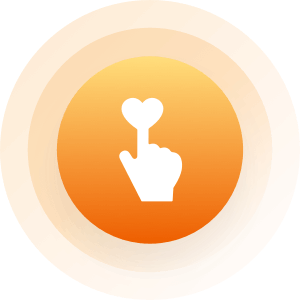| Topic: Go take a walk! | |
|---|---|
|
Walking once a day can do more than you think!
Here is a list of bennefits that walking can do!   
(This article I found at Mayo Clinic's website.) Walking for fitness: How to trim your waistline, improve your health Walking is a low-impact exercise with numerous health benefits. Here's how to get started. Walking is a gentle, low-impact exercise that can ease you into a higher level of fitness and health. It's one of your body's most natural forms of exercise. It's safe, simple, doesn't require practice, and the health benefits are many. Here's more about why walking is good for you, and how to get started with a walking program. Benefits of walking Walking for fitness can help you achieve a number of important health benefits. For example, you can: Reduce your risk of a heart attack. Walking keeps your heart healthy by lowering low-density lipoprotein (LDL) cholesterol (the "bad" cholesterol) and raising high-density lipoprotein (HDL) cholesterol (the "good" cholesterol). A regular walking program also reduces your risk of developing high blood pressure, a factor that also contributes to heart disease. Manage your blood pressure. If you already have high blood pressure, walking may reduce it. Reduce your risk of developing type 2 diabetes. Regular exercise reduces your risk of developing type 2 diabetes. If you're a woman, overweight and at a high risk of diabetes, walking can improve your body's ability to process sugar (glucose tolerance). Manage your diabetes. If you already have type 2 diabetes, taking part in a regular walking program can improve your body's ability to process sugar, lower your blood sugar, reduce your risk of heart disease and help you live longer. Manage your weight. Walking burns calories, which can help you manage your weight. For example, middle-aged women who walk more than 10,000 steps a day have lower levels of body fat than do women who are less active. Manage stress and boost your spirits. Going for a brisk walk is a great way to reduce stress. Regular walking also can reduce feelings of depression and anxiety. Stay strong and active. As you get older, walking for physical fitness can prevent falls, help you stay mobile and maintain your independence. Prepare yourself before you go walking Take time to prepare yourself to prevent injuries, such as blisters on your feet or muscle pain. Wear walking shoes and comfortable, protective clothing Before you set out, be sure to select comfortable footwear. Also dress in loosefitting, comfortable clothing and in layers if you need to adjust to changing temperature. If you walk outside, choose clothes appropriate for the weather. Avoid rubberized materials, as they don't allow perspiration to evaporate. Wear bright colors or reflective tape after dark so that motorists can see you. Warm up Spend about five minutes walking slowly to warm up your muscles. You can walk in place if you want. Increase your pace until you feel warm. Warming up your muscles reduces your risk of injury. Stretch After warming up, stretch your muscles for about five minutes before walking. Include the calf stretch, quadriceps stretch, hamstring stretch, lower back flexion stretch and chest stretch. Getting started: Design a program that works for you Proper walking technique To help ensure your success: Start slow and easy If you're a seasoned walker, keep doing what you're doing. If you've been inactive and tire easily, it's best to start slow and easy. At first, walk only as far as or as fast as you find comfortable. If you can walk for only a few minutes, let that be your starting point. For example, you might try short daily sessions of three to five minutes and slowly build up to 15 minutes twice a week. Then, over several weeks' time, you can gradually work your way up to 30 minutes of walking five days each week. Use proper technique to avoid injury and setbacks Walking is a great exercise because it's so simple to do. But if your posture is poor or your movements exaggerated, you increase your risk of injury. Measure the intensity of your workout As you walk, measure the intensity. Knowing your level allows you to increase the intensity to maximize your workout or slow down to avoid overdoing it. You have these options: Talk test. If you're so out of breath that you can't carry on a conversation with the person you're walking with, you're probably walking too fast and should slow down. Borg scale. This method is a self-assessment of your perceived exertion. You rate how hard you think you're working on a scale that ranges from 6 (no exertion) to 20 (maximal effort). Aim for at least moderate intensity (12 to 14) as you walk. Monitor your heart rate (pulse). To find out if you're exercising within the range of your target heart rate, stop exercising to check your pulse manually at your wrist (radial artery) or neck (carotid artery). Another option is to wear an electronic device that displays your heart rate. Keep track of your progress Keeping a record of how many steps you take, the distance you walk and how long it takes can help you see where you started from and serve as a source of inspiration. Just think how good you'll feel when you see how many miles you've walked each week, month or year. Record these numbers in a walking journal you create for yourself or log them in a spreadsheet on your computer. Another option is to use an electronic device to calculate time and distance for you. Options include: Pedometers. These devices, which you usually attach to your belt or waistband, detect body motion and count your footsteps, displaying the number of steps on a small screen. Although many pedometers have extra features, such as displaying calories burned and the distance walked or run, you may want to begin by using its primary feature — counting steps. High-tech devices. Devices that use GPS satellite technology cost more than pedometers do, but they can track the total and current distance you walk, and even calculate your speed or pace. You may have to program these devices. Some allow you to download stored data to your computer as a way of keeping track of your progress. You wear these high-tech devices on your wrist or attached to your waistband, shoe or arm. Cool down after each walking session To reduce stress on your heart and muscles, end each walking session by walking slowly for about five minutes. Then, repeat your stretches. Stay motivated: Set goals, have fun and stay in the game Starting a walking program takes initiative. Sticking with it takes commitment. But when you think of the potential health benefits, it's well worth your effort. Over time you'll likely feel more invigorated. To stay motivated: Set performance goals. People who stick with a new behavior for six months usually make it a habit. Make it fun. If you don't like walking alone, invite your spouse, partner, friend or neighbor to join you. You might also join a health club and use a treadmill. Vary your routine. Plan several different walking routes for variety. But if you're walking alone, be sure to tell someone which route you're taking. Sometimes things happen to keep you from sticking to a regular walking program. Don't be too hard on yourself when this happens. You don't have to let a few days off sabotage your plan to reach a higher level of fitness and improved health. Follow these tips to get back in the game: Think positively. Don't let negative self-talk, such as "I'm a failure," get in the way of starting again. Shrug it off as a temporary break in your walking program. Re-evaluate your goals. If your goal is to walk two hours a day 365 days a year, you might be setting yourself up to fail. Set realistic goals for yourself, such as 30 minutes five days a week. Get going. Build walking into your schedule today. Just do it. Walk for 10 minutes on your lunch break. Continually plan. If you're taking a trip or working overtime, think of strategies for incorporating short walks into your day to keep your plan on track. You'll be glad you started Even though the first steps of any journey can be the most difficult, it helps to keep your goals foremost in your mind. So remember, once you take that first step, you're on the way to an important destination — better health. http://www.mayoclinic.com/health/walking/HQ01612 |
|
|
|
|
|
I wish I could walk right now. Still tending to a broken leg. It's getting there. I am so blessed. But prior to the break, I'd been walking, do the tread mill, etc. It really was making a difference after a while, with my health and disposition.
It must be awful for those who can't get exercise!! 
|
|
|
|
|
|
I wish I could walk right now. Still tending to a broken leg. It's getting there. I am so blessed. But prior to the break, I'd been walking, do the tread mill, etc. It really was making a difference after a while, with my health and disposition. It must be awful for those who can't get exercise!! 
I didn't know you had a broken leg!!! I'm sorry, sugar. When will you be 100% again. That's gotta be frustrating!! 
|
|
|
|
|
|
Edited by
debbie1980
on
Thu 07/17/08 02:22 PM
|
|
|
i wish i could ****in walk, my ****in bastard groin is killing me
    
excuse my language  
|
|
|
|
|
|
I like to walk just to have a brief moment of zen and clear my head.
SKPCG---Wishing you a speedy recovery! 
|
|
|
|
|
|
i wish i could ****in walk, my ****in bastard groin is killing me     
excuse my language  
(((debbie))) Take care girl! |
|
|
|
|
|
i wish i could ****in walk, my ****in bastard groin is killing me     
excuse my language  
(((debbie))) Take care girl! thanks, how are you??   
|
|
|
|
|
|
I walk/run for 8 hours a day.......at work. Its the best exercize aside from swimming. Who needs a gym?

|
|
|
|
|
|
Been good, this past year Ive had nothing but good check ups. I will be praying for you to have some GREAT check ups in the future too!
|
|
|
|
|
|
Been good, this past year Ive had nothing but good check ups. I will be praying for you to have some GREAT check ups in the future too! thats brilliant  , and thankyou. , and thankyou.   
|
|
|
|
|
|
Thank you for sharing : I am addicted to walking .
|
|
|
|
|









